As our movements are still limited due to the corona crisis, a road trip to the villages of Lješanska Nahija, a region within the municipal boundaries of Podgorica, seemed to be a good idea for the weekend.
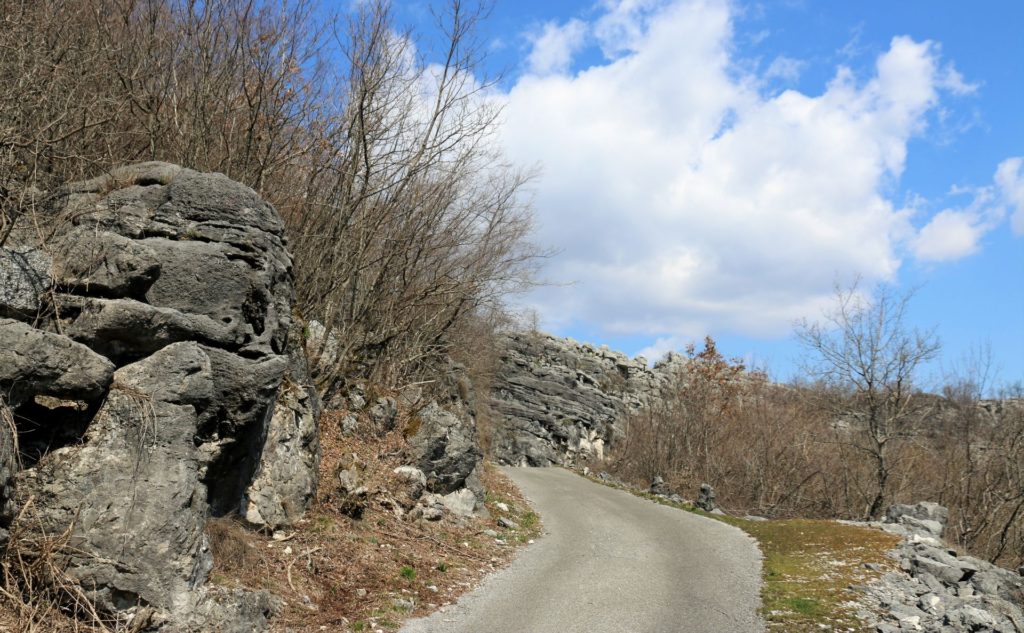 We had already made a round trip through this region seven years ago, but in the meantime, I found additional information about this interesting ‘Nahija’. Moreover, this time we made the trip in early spring, which enabled us to see the vast karst landscapes (due to the bare trees along the road) and to enjoy the flowering fruit trees in the gardens of old village houses.
We had already made a round trip through this region seven years ago, but in the meantime, I found additional information about this interesting ‘Nahija’. Moreover, this time we made the trip in early spring, which enabled us to see the vast karst landscapes (due to the bare trees along the road) and to enjoy the flowering fruit trees in the gardens of old village houses.
Lješanska Nahija
Lješanska Nahija is one of the four typical nahijas (districts) of Old Montenegro – the territory of the Principality of Montenegro as recognized by the Berlin Congress in 1878. The toponym is derived from the Serbian given name Lješ. The name Lješanska Nahija was first mentioned in 1692. It was the most impoverished and smallest part of the Principality of Montenegro. Nowadays, it is a typical karst region with harsh mountains, picturesque villages and beautiful, but often abandoned stone houses. The roads are paved, but here and there, they are very narrow.
The Route
Leaving Podgorica in the direction of Cetinje, turn right towards Beri before crossing the bridge over the Sitnica river (or turn right further along the road, following the signpost to Draževina).
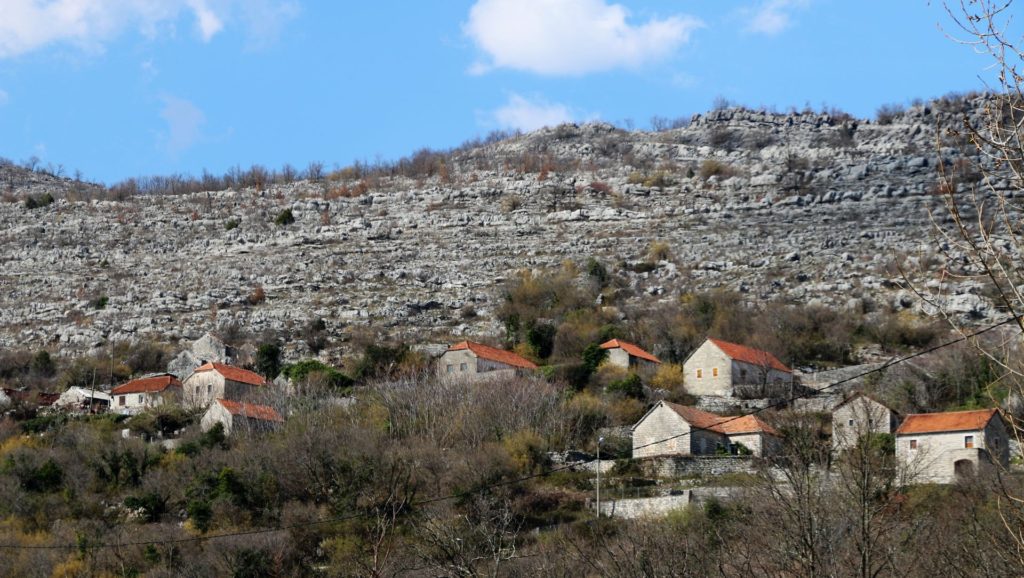 You will soon reach the village of Kruse, where you can make a stop and visit the obelisk and the old church. The road continues to Draževina, Buronji and Progonovići. Progonovići (keep right, follow the signpost) is an extensive village, where you can visit several interesting sites.
You will soon reach the village of Kruse, where you can make a stop and visit the obelisk and the old church. The road continues to Draževina, Buronji and Progonovići. Progonovići (keep right, follow the signpost) is an extensive village, where you can visit several interesting sites.
Continue the tour and keep right at the next junction to the direction of Orasi. This is a narrow dead end road, but there are picturesque old houses along the route and you will have great views of the surroundings. Turn back along the same road from Orasi, then turn right at the junction and follow the road to Štitari.
At the junction with the signpost to Mikulići, keep left and after 10 km you will be back on the main road Cetinje-Podgorica. The whole tour is around 70 km long and can easily be done on a beautiful afternoon.
 But if you have less time, you can also take a shortcut. Just keep left after passing Buronji in the direction of Gradac and Staniseljići. You will soon arrive on the main road Cetinje-Podgorica.
But if you have less time, you can also take a shortcut. Just keep left after passing Buronji in the direction of Gradac and Staniseljići. You will soon arrive on the main road Cetinje-Podgorica.
The Karst Region of Montenegro
The karst region in the central part of Montenegro covers around 21% of the territory and belongs to the Dinaric Karst System. It has a very small area of arable land (only 8%). At the land surface, karst landscapes often develop characteristic geomorphological features, such as solutional sculpting of the bedrock, (‘dolines’) or sinkholes, and large closed depressions (‘poljes’), but also positive landforms such as rock towers, cones and pinnacles. Most karst areas do not have water springs, they are extremely dry in summer and the inhabitants of the villages depend on rainwater reservoirs, as there is no water supply system. This is one of the reasons why many houses in the villages of this region are abandoned and dilapidated; life was (and is) very hard for the local farmers.
The Road Trip
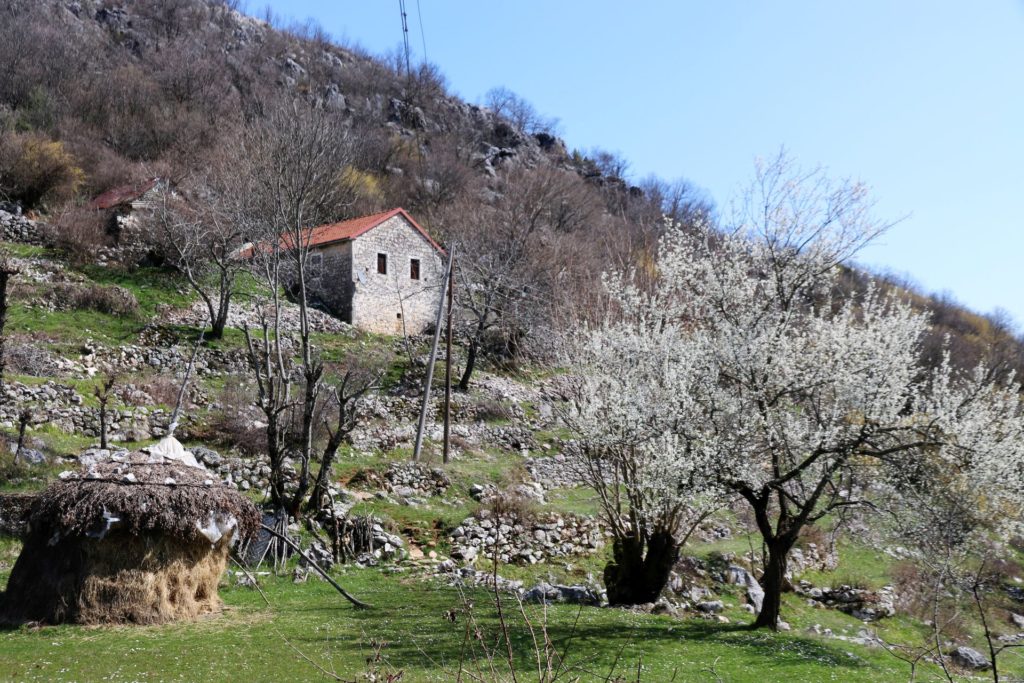 Arriving in Kruse, we saw a white obelisk along the road. It was dedicated to the famous battle (1796) that Sveti Petar Cetinjski fought against the Turks. There is also a big threshing floor (‘guvno’) and a beautiful old church with a small graveyard on the top of a hill, from where we had a magnificent view of the surroundings.
Arriving in Kruse, we saw a white obelisk along the road. It was dedicated to the famous battle (1796) that Sveti Petar Cetinjski fought against the Turks. There is also a big threshing floor (‘guvno’) and a beautiful old church with a small graveyard on the top of a hill, from where we had a magnificent view of the surroundings.
The road continued to Draževina and Buronji, nice villages with picturesque old stone houses, characterized by large arches and cellars.
Soon we arrived in Progonovići, a picturesque village on the slope of the karst mountains. We parked at Radun’s Tower (Kula Radunova) which was mentioned by Petar II Petrović Njegoš, prince-bishop of Montenegro, in his famous work “Mountain Wreath” (1846). The tower has been restored and offers a great view of the surroundings. Another interesting site is ‘Jamica’, a natural and very deep well, the water of which can be reached by corkscrew stairs.
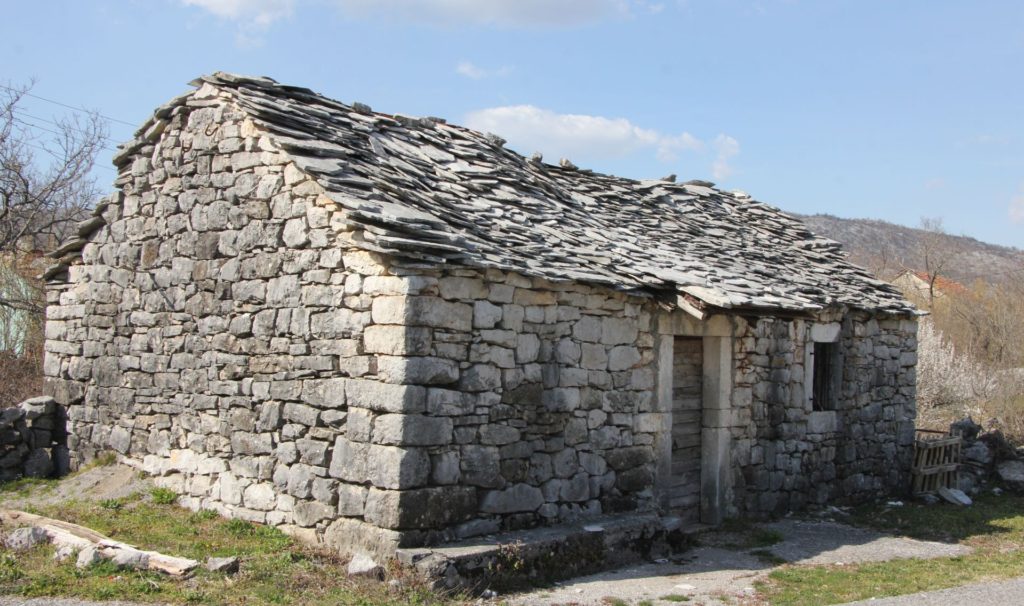 By the way, before reaching Progonovići, you will see a church on the top of a hill on the right side. Take the local road uphill, enjoy the view and the moment of complete silence…
By the way, before reaching Progonovići, you will see a church on the top of a hill on the right side. Take the local road uphill, enjoy the view and the moment of complete silence…
Typical for this area are the traditional stone houses covered with stone plates. Most of them are dilapidated, their roof construction broke down and they are not in use any more. It is a pity that some of these houses were not put under state protection, as they are quite picturesque. By the way, several Montenegrin movies were made in and around Progonovići, with participation of the villagers. The movie of the famous director Živko Nikolić, ‘Ljepota poroka’ (‘The Beauty of Vice’) that was shot here in 1986, was distributed in 80 countries.
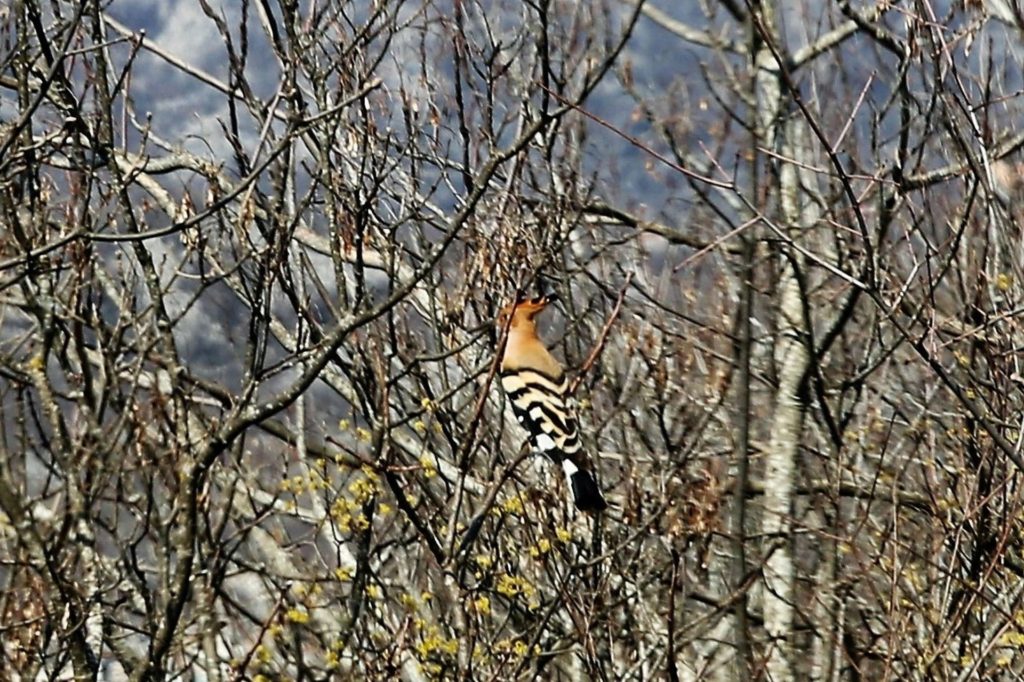 The only time I saw a hoopoe (Upupa epops) in Montenegro was seven years ago, exactly in this region. And now we saw four or five of them flying between the trees and bushes. Of course, it was almost impossible to make a photo of them, but they were so beautiful with their vivid colors and “crown” of feathers!
The only time I saw a hoopoe (Upupa epops) in Montenegro was seven years ago, exactly in this region. And now we saw four or five of them flying between the trees and bushes. Of course, it was almost impossible to make a photo of them, but they were so beautiful with their vivid colors and “crown” of feathers!
We continued and kept right, as we wanted to explore some villages along a dead end road: Čepetići, Djinovići and Orasi. Following this narrow and steep road, we enjoyed the harsh mountains, bizarre karst rocks, old stone houses surrounded by flowering fruit trees and endless dry-stone walls. The big yellow Euphorbia was flowering everywhere among the rocks and along the road.
The road stopped near Orasi and we had to return to the junction, where we turned right and continued to Štitari and further to the main road Cetinje-Podgorica.
If you have less time or if you want to extend the trip, you can also keep left after you passed Buronji in the direction of Gradac and Staniseljići. This road also leads to the main road Cetinje-Podgorica.
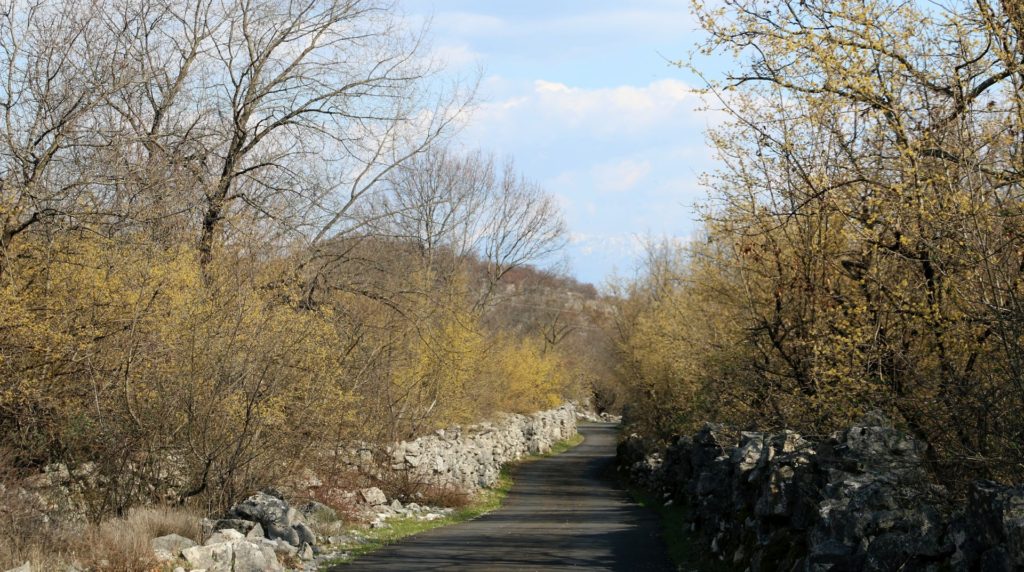 But on your way, you can enjoy driving in between endless dry-stone walls with a backdrop of yellow cornel trees. And don’t forget to make a small detour to the nearby village of Gradina, where you can see a typical old stone house with a roof of stone plates.
But on your way, you can enjoy driving in between endless dry-stone walls with a backdrop of yellow cornel trees. And don’t forget to make a small detour to the nearby village of Gradina, where you can see a typical old stone house with a roof of stone plates.
Entering the village of Staniseljići is an adventure. The road is extremely narrow and runs in between high dry-stone walls. Just hope that there will be no other car coming from the opposite direction…
If you like karst landscapes, old stone houses and the rough nature of Old Montenegro, make this trip on a sunny afternoon. I am sure you will not regret it!
Map of the Route
RED line = round trip through Lješanska Nahija
BLUE line = dead end road to Orasi
GREEN line = shortcut
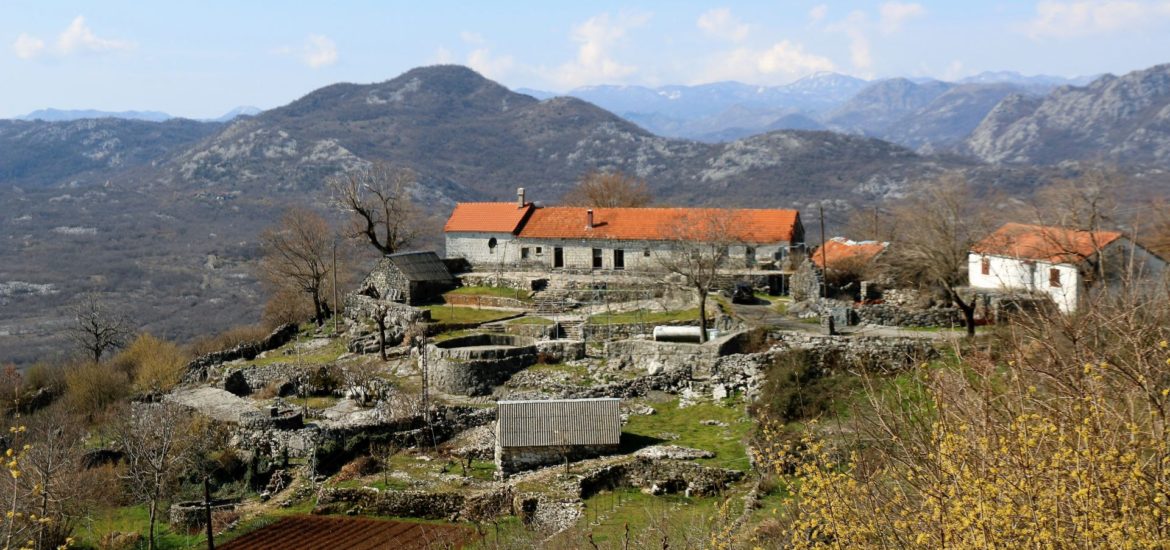

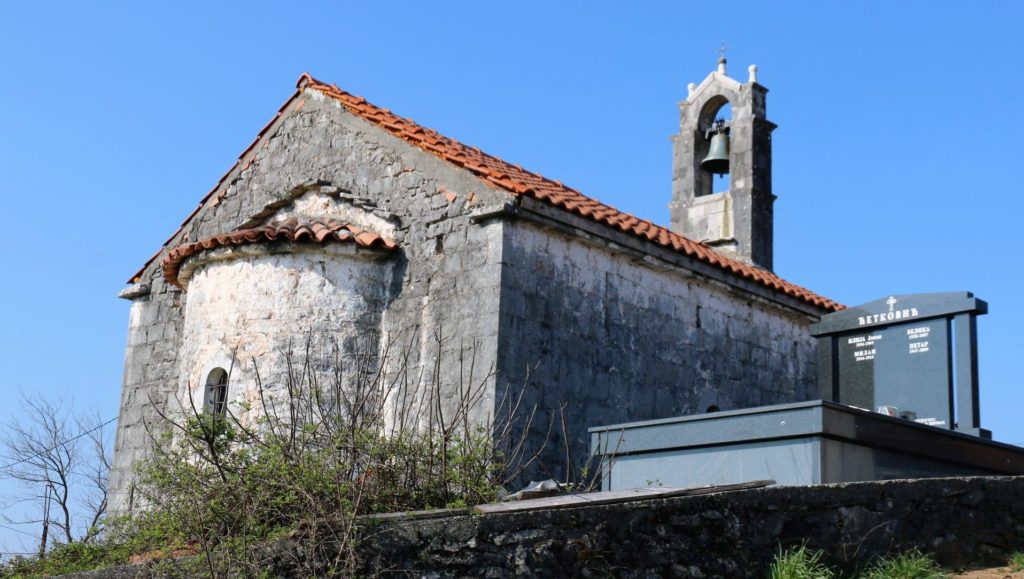
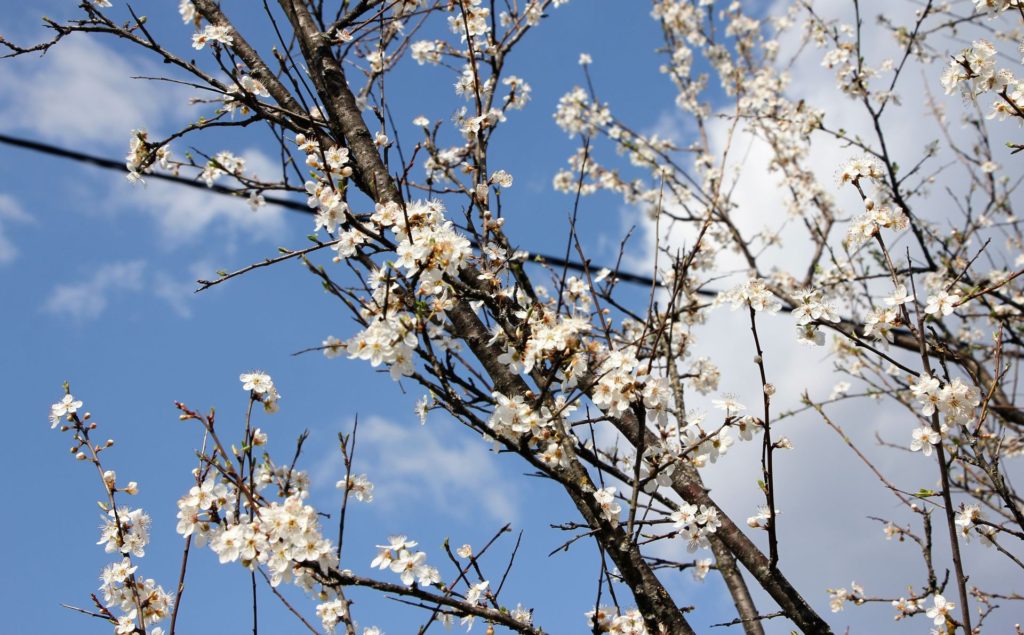
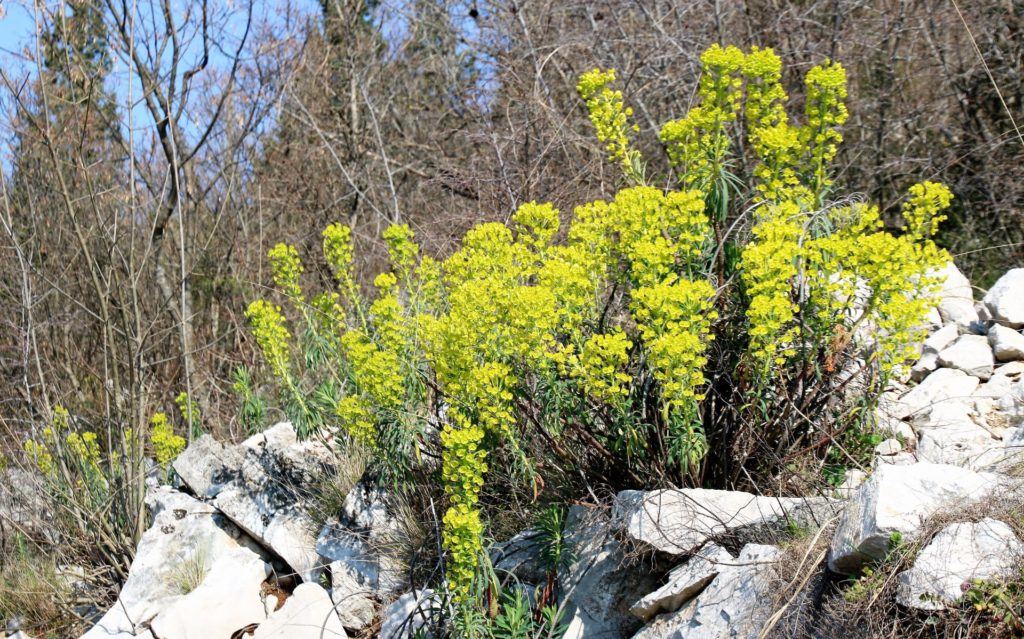

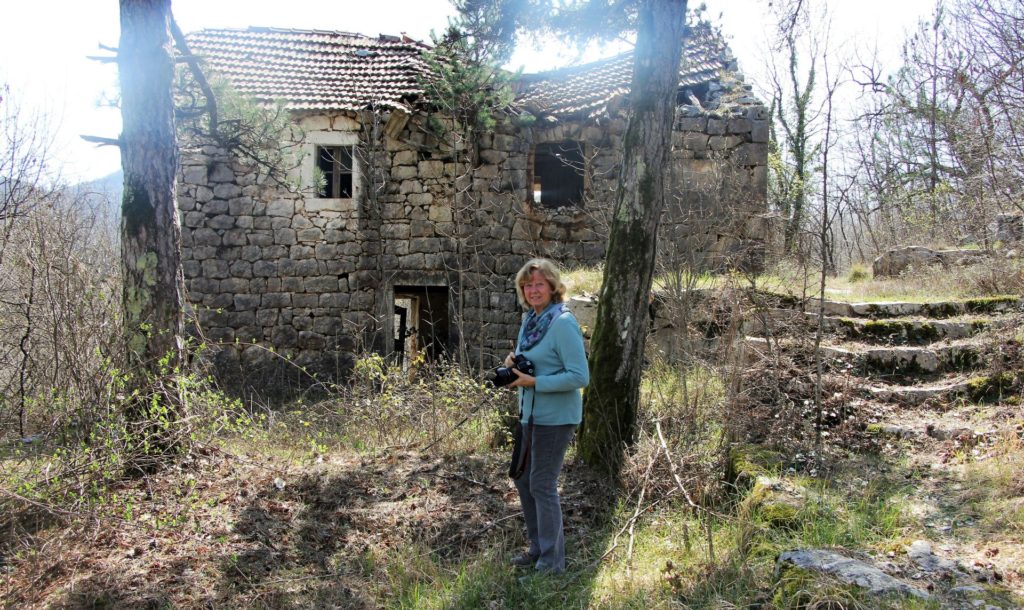
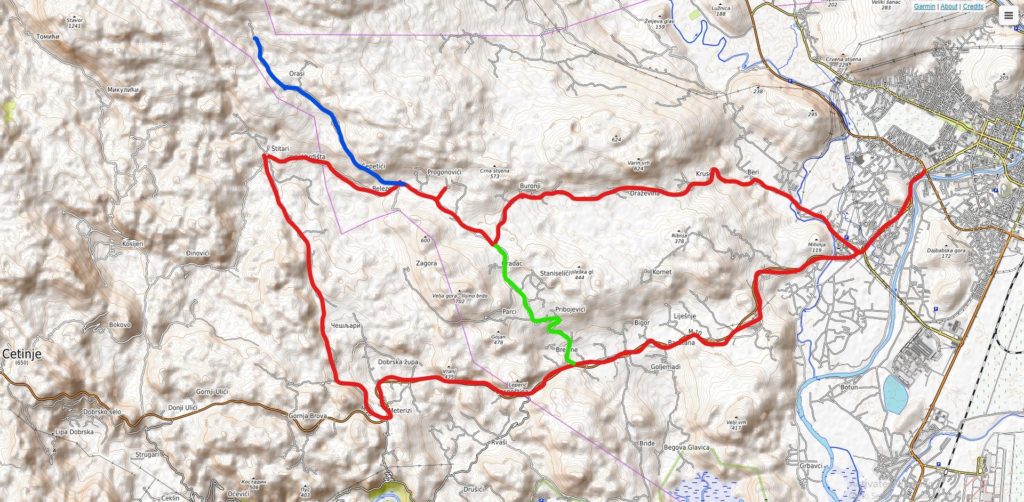
Great review and thank you for the maps. Very instructive.
Lješanka is from albanian name Lesh….from Lezha.